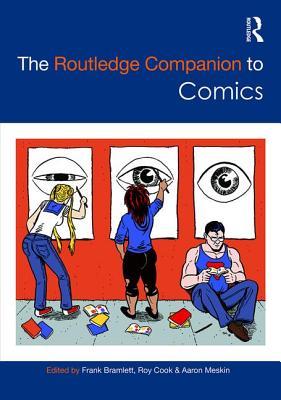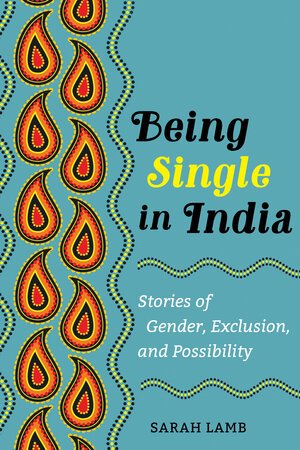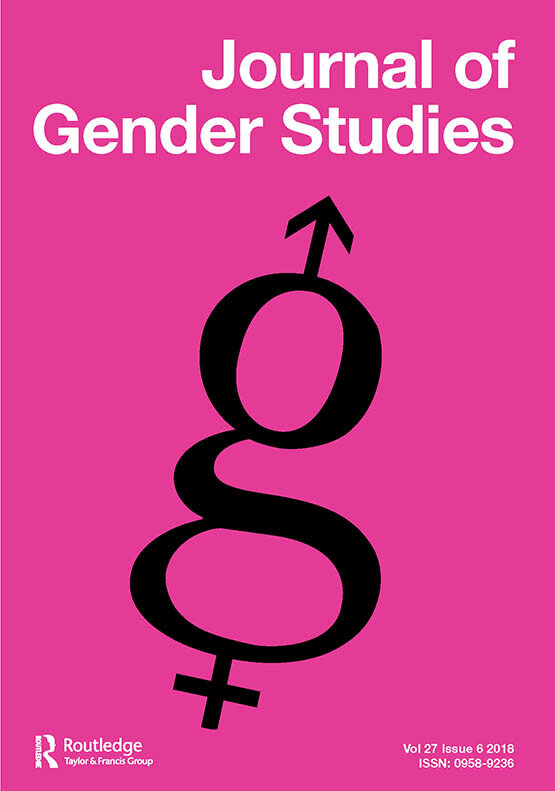ACADEMIC RESEARCH
Interested in focusing on Priya and the comic book series in your next academic research and thesis, or for an article? The comic book series and all of the surrounding activities have been included in dozens of university papers, books, and anthologies. We offer full access to all of our materials, data, and graphics for free. Anyone involved in the series is available for interviews, too. We encourage a critical discussion about the comic book — both positive and negative.
Possible topics: comic books and graphic novels, gender-based violence, women’s studies, Indian mythology, Hinduism and religion, India and Southeast Asia, augmented reality, interactive art and storytelling, documenting trauma, rape culture, street art and murals, and many more.
Please contact us at priya(at)priyashakti.com
Priya’s Shakti is archived at the US Library of Congress.
Publications and Academic Research
The Routledge Companion to Media and Race. Chapter 26: “India: Insecurities of a Nation on the Rise.” by Sidharth Muralidharan.
Journal of Graphic Novels and Comics. Can comic books influence consumer awareness and attitude towards rape victims and perpetrators in India? The case of Priya’s Shakti by Dhiman Chattopadhyay.
This paper explores the role of comic book narratives in creating awareness and influencing attitudes about how society treats rape survivors, specifically in the Indian context. The gang rape of a young woman in New Delhi in 2012 inspired an Indian-American filmmaker to author the comic book Priya’s Shakti, which was launched at the Mumbai Comicon in December 2014. The book uses Hindu mythology in its narrative to call for a change in existing belief systems about rape and rape victims. Twenty-four in-depth and ethnographic go-along interviews of informed participants were conducted to understand how they perceive the role of comics such as Priya’s Shakti in affecting popular awareness and attitudes about rape and what approaches they feel are best suited to use comic books to bring about sustainable social change. Results indicated comics can play a significant role in creating awareness, especially among the younger audience but that changing attitudes is a more complex issue, demanding the active and engaged participation of other stakeholders. A culture-centred approach was the key emerging theme. Respondents believed comic books could be used to reach out to children in schools and to rural audiences via multiple communication methods but that engaged and involved participation of community stakeholders was essential if comic books were to drive home socially relevant messages and affect awareness and attitudes about rape. Note: cover is not the same
Religions. Mobilizing Shakti: Hindu Goddesses and Campaigns Against Gender-Based Violence by Ali Smears.
Hindu goddesses have been mobilized as powerful symbols by various groups of activists in both visual and verbal campaigns in India. Although these mobilizations have different motivations and goals, they have frequently emphasized the theological association between goddesses and women, connected through their common possession of Shakti (power). These campaigns commonly highlight the idea that both goddesses and Hindu women share in this power in order to inspire women to action in particular ways. While this association has largely been used as a campaign strategy by Hindu right-wing women’s organizations in India, it has also become a strategy employed in particular feminist campaigns as well. This article offers a discourse analysis of two online activist campaigns (Priya's Shakti and Abused Goddesses) which mobilize Hindu goddesses (and their power) in order to raise awareness about gender-based violence in India. I examine whether marginalized identities of women in India, in relation to caste, class and religious identity, are represented in the texts and images. To do so, I analyze how politically-charged, normative imaginings of Indian women are constructed (or maintained). This analysis raises questions about the usefulness of employing Hindu goddesses as feminist symbols, particularly in contemporary Indian society, in which communal and caste-based tensions are elevated.
Comic belief: a research about contemporary Indian comic books by Aparaajith Sharmaa.
A Compilation of definitive conceptual, aesthetic and narrative elements of contemporary Indian comic books and graphic novels. A Research Dissertation Submitted as a Partial Fulfillment of the Program at Department of Media and Communication Studies, Savitribai Phule Pune University.
After Nirbhaya: Anti-sexual Violence Activism and the Politics of Transnational Social Media Campaigns by Ayesha Vemuri, Department of Art History and Communication Studies McGill University, Montreal.
In December 2012, the brutal gang rape of a young woman in a moving bus in New Delhi resulted in widespread protests across India. Now known as the Nirbhaya case, this incident generated a mass media furor around the globe, bringing intensified attention to sexual violence in India, as well as revealing orientalist and neocolonial perceptions about gender violence in India. In this thesis, I analyse three campaigns that went viral on social media following the Nirbhaya incident. The Abused Goddesses advertising campaign uses images of battered Hindu goddesses to create awareness about domestic violence. Priya's Shakti is an augmented reality comic book that presents a rape survivor as a 'superhero' who embarks on a journey to overturn rape culture and victim blaming. I view the discourse surrounding these three campaigns through the conceptual lens of transnational feminist solidarity, as articulated in the work of postcolonial feminists such as Chandra Talpade Mohanty, Jacqui Alexander, Inderpal Grewal and Caren Kaplan. I argue that international media reports which uncritically celebrate the use of Hindu mythology in campaigns about sexual violence contribute to the persistence of orientalist and neocolonial perceptions of India. In addition, they help render invisible the ongoing and increasing violence of Hindu fundamentalism in India. I advocate a conscious effort to move away from such narrow discursive portrayals of sexual violence in India, towards a more reflective and nuanced narrative. This move, I argue, creates the opportunity for forming coalitions and solidarity amongst transnational feminists across borders of class, race, caste, nationality, religion, sexuality and gender.
Global Convergence Cultures Transmedia Earth. Edited by Matthew Freeman, William Proctor (Routledge). Chapter 11. India: Augmented Reality, Transmedia Reality and Priya’s Shakti by Matthew Freeman.
Today’s convergent media industries readily produce stories that span multiple media, telling the tales of superheroes across comics, film and television, inviting audiences to participate in the popular universes across cinema, novels, the Web, and more.
Critical Distance in Documentary Media edited by Gerda Cammaer, Blake Fitzpatrick, Bruno Lessard.
Offers new theoretical perspectives within the field of documentary studies. Expands the field of documentary studies and addresses mobile media, sound art, installation, and photography, among other neglected documentary media. Features “Priya’s Shakti” [ learn more ]
The Comics World: Comic Books, Graphic Novels, and Their Publics is the first collection to explicitly examine the production, circulation, and reception of comics from a social-scientific point of view. Designed to promote interdisciplinary dialogue about theory and methods in comics studies, this volume draws on approaches from fields as diverse as sociology, political science, history, folklore, communication studies, and business, among others, to study the social life of comics and graphic novels. Learning to “Speak without Shame” A FEMINIST RESPONSE TO GENDERED VIOLENCE IN PRIYA’S SHAKTI (pp. 128-146) by Valerie Wieskamp
Dipti Mehta and Ram Devineni of "Priya and the Lost Girls" delivered the convocation for their Fall 2020 class at Mount Aloysius College.
The Present Image: Visible Stories in a Digital Habitat by Paolo S. H. Favero. Analyze Priya’s Shakti and use of augmented reality.
Gender Perspectives in Indian Context: Critical Responses by Dipak Giri. Last few years, apart from schemes for women’s security and empowerment, have also seen the announcement of many welfare schemes for the health and well-being of third gender people of India and decriminalisation of homosexuality from Indian soil. Book examines Priya’s Shakti and it focus on women’s safety in India.
Literary Cultures and Digital Humanities in India edited by Nishat Zaidi, A. Sean Pue (Routledge). This book explores the use of digital humanities to understand, interpret, and annotate the poetics of Indian literary and cultural texts, which circulate in digital forms with a focus on Priya comics.
Gendered Violence in Public Spaces: Women’s Narratives of Travel in Neoliberal India. Edited by Swathi Krishna S. and Srirupa Chatterjee. “Mirrors of Real: Toxic Masculinity, Traveling Women, and the Representation of Acid Attack Victim-Survivors in Priya’s Mirror” by Nidhi Shrivastav.
The Routledge Companion to Comics. Chapter: Comics in India by Jeremy Stoll.
This cutting-edge handbook brings together an international roster of scholars to examine many facets of comics and graphic novels. Contributor essays provide authoritative, up-to-date overviews of the major topics and questions within comic studies, offering readers a truly global approach to understanding the field.
Crafting Stories for Virtual Reality by Melissa Bosworth, Lakshmi Sarah. Routledge. We are witnessing a revolution in storytelling. Publications all over the world are increasingly using immersive storytelling—virtual reality, augmented reality and mixed reality—to tell compelling stories. The aim of this book is to distill the lessons learned thus far into a useful guide for reporters, filmmakers and writers interested in telling stories in this emerging medium. Examining ground-breaking work across industries, this text explains, in practical terms, how storytellers can create their own powerful immersive experiences as new media and platforms emerge.
Priya's Shakti: una heroína diferente (Bachelor Thesis) by Carla Pelegero de la Rosa, Carla. Treball de fi de grau d'Humanitats. Curs 2016-2017. Universitat Pompeu Fabra.
Priya Shakti : un cómic que ayuda al cambio cultural con perspectiva de género by Ilda Peralta Ferreyra. (Aaria Montano. Repositorio Institucional de la Universidad de Huelva)
Priya Shakti nace como un homenaje a Jyoti Singh Pandey, Nirbhaya como le llamaron en los medios de comunicación, la joven hindú estudiante de medicina de 23 años que fue brutalmente golpeada con una barra de hierro y luego violada por varios hombres en un bus de Nueva Delhi, en diciembre de 2012 Priya´s Shakti es un proyecto transmedia hindú que a través del cómic muestra historias reales y los problemas con los que se encuentran las mujeres supervivientes de agresiones sexuales en la India. A partir de esas historias dibujadas y convertidas a veces en cine animado, las mujeres hacen oír su propia voz. El cómic da voz a estas mujeres y ayuda remover las bases del hinduismo rescatando al recuerdo sus raíces matriarcales. A través de estos relatos gráficos dirigidos a todo tipo de personas, fundamentalmente adolescentes, se aborda la violencia de género y se incide en la visión que tiene la sociedad India sobre el papel de la mujer. Intenta combatir, mediante la educación, los ataques sexuales contra mujeres.
The IUP Journal of English Studies. Graphic Retellings of Durga Mythology in Contemporary Popular Culture by Sugandha Sehgal. (University of Delhi - Jesus and Mary College).
According to Shakti tradition in Hindu religious and philosophical thought, the ultimate reality of the cosmos is an all-pervading female spiritual energy that fills the cosmos, a female manifestation of the Supreme Being—‘Shakti.’ With the composition of the classical Sanskrit text Devi Mahatmyam by sage Markandeya in the sixth century, the worship of the female principle assumed new dimensions. This paper focuses on the mythological meta-narrative of the Goddess with the aim of exploring the curious intersections between Hindu mythology and a cosmopolitan modernity as reflected in a select few comics of the late twentieth and early twenty-first century India. Taking Anant Pai’s Tales of Durga (Amar Chitra Katha) as the starting point, the paper explores the modernist appropriations of traditional Devi mythology in three works—Ganesh’s (2002) Tales of Amnesia, Virgin Comics’ Kali (2007), and Priya’s Shakti (2014)—and shows that a serious comics culture has arrived in India, turning the comics medium into a vehicle for social dialogue and cultural critique.
The Body of the Goddess: Religious and Political Power of the Indian Female Body and Ruptures of Resistance by Kathleen Kaura, Graduate Program in Comparative Studies at Ohio State University.
In India the woman’s body is often a contested site of power: a physical manifestation of religious, political, cultural, historical, and national assemblages. Her body can simultaneously be both identified as the nation-state and the divine feminine goddess, or even as cosmos herself. This paper will first examine historical patriarchal interpretations of utilizing the Indian woman’s body for political and religious purposes by using three specific cases. This paper takes a deeper look at more recent cases of Indian women essentializing their powerful bodies and identity for their own political, social, and religious gain, in such instances as women around the Kamakhya temple in Assam, the graphic novel Priya’s Shakti, the Abused Goddesses ad campaign, as well as other recent Indian feminist movements.
Narrative in Culture Edited by Astrid Erll (Editor), Roy Sommer.
The collection showcases new research in the field of cultural and historical narratology. Starting from the premise of the “semantisation of narrative forms” it explores the cultural situatedness and historical transformations of narrative, with contributors developing new perspectives on key concepts of cultural and historical narratology, such as unreliable narration and multiperspectivity. Focus on “Priya’s Shakti.” (Learn More)
Navajyoti, International Journal of Multi-Disciplinary Research. Unconventional Voices and Alternate Spaces: Redefining Popular Narratives through Kari, Nasreen and Priya by Anu Mathai. Lecturer, Christ Junior College, Bangalore.
This paper attempts to explore the psyche of female protagonists shattering gender stereotypes through the complex female characters in graphic novels like ‘Kari’ by Amruta Patil, ‘Priya’s Shakti’ by Ram Diveneni and ‘Bloody Nasreen’ by Shahan Zaidi. The focus is on characters arising out of regions known for strong gender conflict and cultural complexities. It studies their appearance, character traits, behavioural patterns, occupational choices, all stemming out of the need to make their voice strongly heard in the contemporary world.
Performativity, Cultural Construction, and the Graphic Narrative edited by Leigh Anne Howard, Susanna Hoeness-Krupsaw.
Performance, Social Construction and the Graphic Narrative draws on performance studies scholarship to understand the social impact of graphic novels and their sociopolitical function. Addressing issues of race, gender, ethnicity, race, war, mental illness, and the environment, the volume encompasses the diversity and variety inherent in the graphic narrative medium. [ learn more ]
Reviewed Work: Priya's Shakti (Modern Language Studies) Vol. 45, No. 2, (WINTER 2016), pp. 60-64 (5 pages) Review by: Sharmila Mukherjee.
Ideas para aprender a aprender (Manual de innovación educativa y tecnología) José Manuel Pérez Tornero y Santiago Tejedor (eds.) La educación, en todos sus ámbitos y en todos los sistemas educ ativos, está abocada a cambios obligatorios, necesarios, exógenos y end ógenos. Está sometida a un vaivén incesante de transformaciones: cambia la tecnología, cambian los actores, cambian las demandas, cambian las circunstancias... Pero precisamente es la innovación la que puede introducir sentido, racionalidad y coherencia a estos cambios. Son los cambios innovadores los que aportan auténticas novedades y los que resultan positivos.
Being Single in India edited by Sarah Lamb. University of California Press. Today, the majority of the world’s population lives in a country with falling marriage rates, a phenomenon with profound impacts on women, gender, and sexuality. In this exceptionally crafted ethnography, Sarah Lamb probes the gendered trend of single women in India, examining what makes living outside of marriage for women increasingly possible and yet incredibly challenging. Featuring section on “Priya’s Shakti.
Craft and Conscience: How to write about social issues by Kavita Das (Beacon Press). Writers are witnesses and scribes to society’s conscience but writing about social issues in the twenty-first century requires a new, sharper toolkit. Kavita Das guides writers to take on nuanced perspectives and embrace intentionality through a social justice lens. Focus on Priya comics.
Artists’ Narratives Across Culture: Globally Mapping Violence Against Women by Lauren Stetz Ph.D. The author considers how healthcare workers can learn from artists to address the vulnerability of the physical body through the development of nurturing emotional relationships with patients. Focus on Priya comics.
Image-Making-India: Visual Culture, Technology, Politics by Paolo Silvio Harald Favero. The book explores selected artistic experiences in documentary and fiction film, photography, contemporary art and digital curation that have in common a desire to engage with images as tools for social intervention such as Priya’s Shakti.
South Asian Review. The Representation of Gender and Sexuality in Priya’s Shakti by Nidhi Shrivastava.
As a response to the emerging discourse on violence against women in the aftermath of the heinous 2012 Delhi gang-rape case, filmmaker Ram Devineni and his collaborators Dan Goldman and Lina Shrivastava created Priya’s Shakti – India’s first augmented reality comic book geared towards young teenage children. This essay analyzes how the comic book represents Priya as a rape survivor. Using my interviews with Devineni and an analysis of the reception of Priya’s Shakti, I argue that this work’s success is a testament to the new forms of media that are being deployed across class and location, to create new conversations about taboo topics like female sexuality and rape. These new graphic media narratives, I contend, redeploy the power of mythological characters that are inspired by the classic Amar Chitra Katha comics. By recasting these mythological characters, they invite readers to see all cultural norms about gender and sexuality as malleable rather than fixed; this opens up a new space for exploring how a rape culture may be challenged and changed.
Signs: Journal of Women in Culture and Society. Mediating Rape: The Nirbhaya Effect in the Creative and Digital Arts by Raminder Kaur. (The University of Chicago Press Books).
While references to Nirbhaya, referring to the brutal gang rape of a young woman on a moving bus in New Delhi 2012, have been plentiful, less attention has been paid to creative representations on the subject. In this article, I consider how the atrocity has been mediated through multiple outlets in India as part of a reinvigorated aesthetics of grief, anger, critique, and protest against sexual violence. Building on earlier feminist modes of artistic engagement, I consider the “Nirbhaya effect” through outlets such as online films, canvas art, posters, photography, murals, comic books, satirical skits, and staged interventions on the streets that have been described as social experiments. These creative outlets may be considered in terms of five overlapping registers: memorialization, affirmative solidarity, ironic provocations, rescripting the master narrative, and sensationalization. Altogether, they indicate the many potentials and limitations of a violent wound in the social fabric, channeled through the creative arts and digital media.
Communication Design Quarterly. Designing With HDR Data: What the Human Development Report Can Tell Us about International Users by Hilary Sarat-St. Peter Columbia College Chicago
I-Docs: The Evolving Practices of Interactive Documentary edited by Judith Aston, Sandra Gaudenzi, and Mandy Rose. Wallflower Press.
The Priya’s Shakti project is probably the most avant-garde of multiple media and cross-platform projects that I have come cross across. (read more)
Superheroines and the Epic Journey: Mythic Themes in Comics, Film and Television by Valerie Estelle Frankel.
The heroine's journey echoes throughout ancient legend. Each young woman combats her dark side and emerges stronger. Special focus on “Priya’s Shakti.” (read more)
The Journal of Feminist Scholarship. I Will Tell Your Story: New Media Activism and the Indian “Rape Crisis” by Rukmini Pande, University of Western Australia and Samira Nadkarni, University of Aberdeen.
This article analyzes the mediatized representations of the Indian “rape crisis” that gained global attention in the aftermath of the brutal gang rape of Jyoti Singh Pandey in New Delhi in 2012. This article examines two such texts—the multimedia short story We Are Angry (2015) and the augmented-reality comic Priya’s Shakti (2014). Both these texts declare their intention to function as “activist” multimedia pieces that leverage the power of Internet-mediated platforms to raise awareness about the condition of the “Indian woman” in the contemporary moment. This article argues that these texts, in their attempts to portray an essentialized and universalized image of the “Indian woman,” reenact certain violent historical erasures along the lines of caste, sexuality, class, and religion.
Rape Culture and Religious Studies: Critical and Pedagogical Engagements edited by Rhiannon Graybill, Meredith Minister, Beatrice Lawrence. Chapter 2: Construction of Hindu Mythology after the Rape of Jyoti Singh Pandey by T. Nicole Goulet.
The book stages a critical engagement between religious texts and the problem of sexual violence. Rape and other forms of sexual violence are widespread on college and university campuses; they also occur in sacred texts and religious traditions. The volume addresses these difficult intersections as they play out in texts, traditions, and university contexts. The volume gathers contributions from religious studies scholars to engage these questions from a variety of institutional contexts and to offer a constructive assessment of religious texts and traditions. Focus on “Priya’s Shakti.” (Learn more)
The Struggle for Freedom from Fear: Contesting Violence against Women at the Frontiers of Globalization. By Alison Brysk.
INTEGRAL Season Three: Gender Justice and The Common Good. “Gender Justice and the Indian Comic” by Sharmila Lodhia, Associate Professor, Women’s and Gender Studies Department and Bannan Faculty Fellow, Ignatian Center for Jesuit Education, Santa Clara University. Interview with Ram Devineni, creator of “Priya’s Shakti”
La comunicación participativa y decolonial en procesos de resiliencia subalterna al silenciamiento sistémico. Experiencias de medios comunitarios en India. By Amaia Landaburu Corchete
La tesis estudia la contribución de la comunicación participativa y decolonial a la resiliencia de las poblaciones subalternas frente al silenciamiento sistémico y la exclusión en India. The resilience processes in which subaltern groups have been able to transform their social reality and build a different one through dialogical action (Freire, 1970) in contemporary India is the main focus of the research.
Performance beyond the panel: (S)exploitation and trafficking in Ram Devineni’s Priya and the Lost Girls by Partha Bhattacharjeea and Priyanka Tripathia
Positioned at the intersection of comics studies and gender studies, this article examines the process in which the ‘performance’ of Ram Devineni’s comic Priya and the Lost Girls (2019), with a honing narrative intertwined with Augmented Reality, sensitizes its readers towards the issue of sex/human trafficking in India. [ learn more ]
Journal of Visual Communication in Medicine. Positioning this essay at intersection of comics studies, visual literacy studies, and information literacy studies, we investigate an interdisciplinary liaison between crisis in the age of COVID-19 and its awareness campaign through Indian comic with a focus on “Priya’s Mask.” Spit bubbles, speech bubbles, and COVID-19: creating comics in the age of post-infection India by Partha Bhattacharjee & Priyanka Tripathi
The Routledge Companion to Gender and Sexuality in Comic Book Studies edited by Frederick Luis Aldama. A diverse range of international and interdisciplinary scholars take a closer look at how gender and sexuality have been essential in the evolution of comics, and how gender and sexuality in comics demand that we re-frame and re-view comics history including a focus on Priya’s Shakti.
Wonder Women and Bad Girls: Superheroine and Supervillainess Archetypes in Popular Media by Valerie Estelle Frankel. In this in-depth analysis of female characters in superhero media, the author begins by identifying ten eras of superhero media defined by the way they portray women. Focus on Priya comics.























